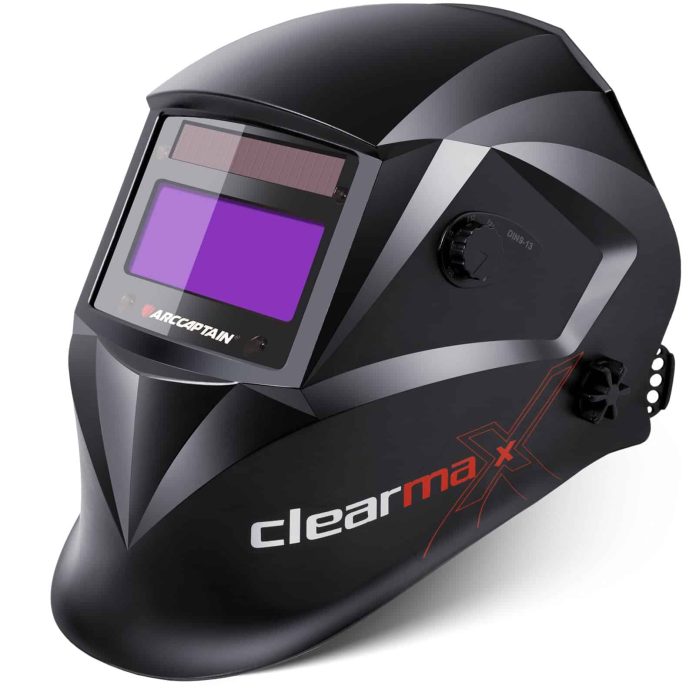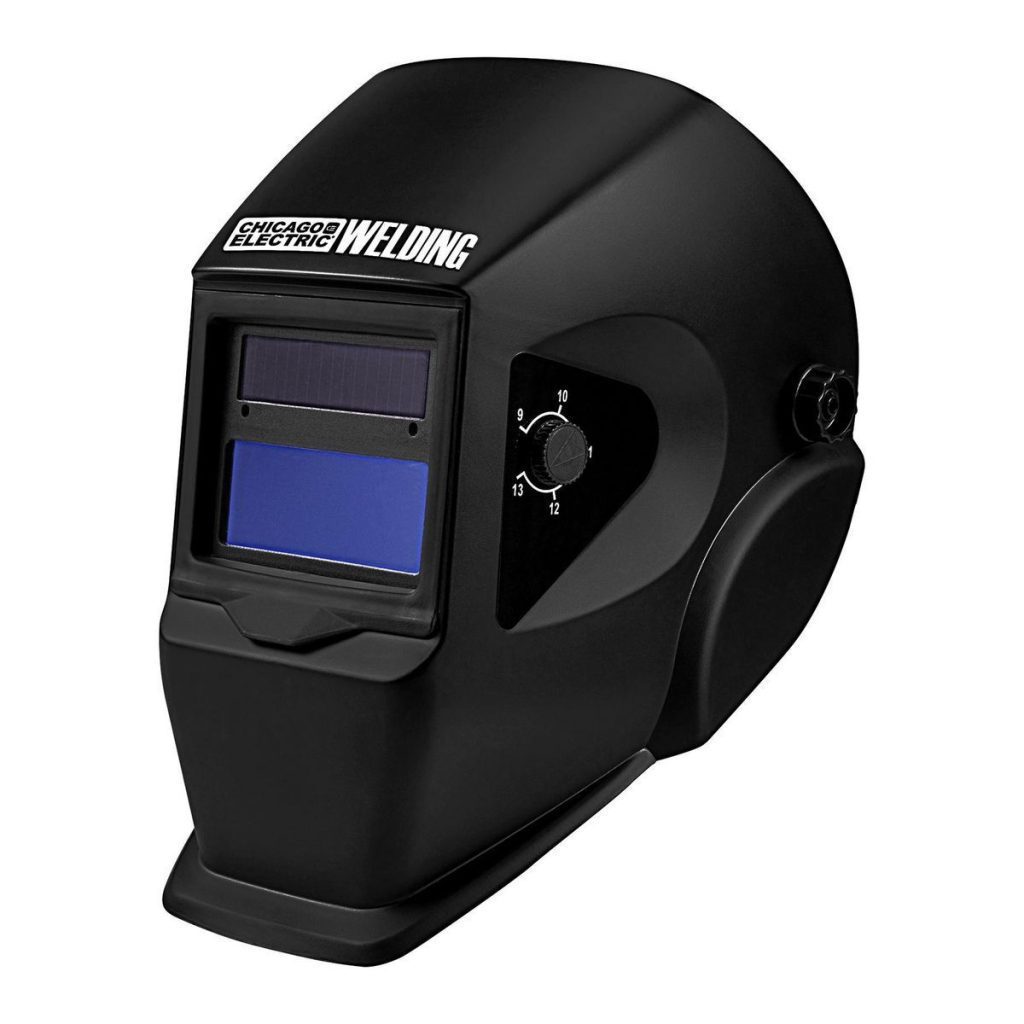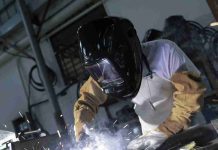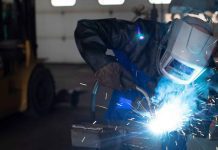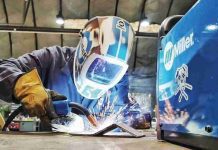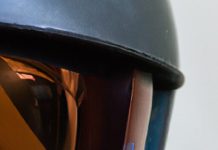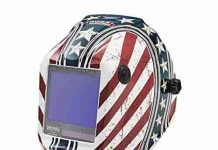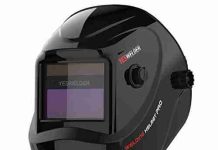Today, we will explore the fascinating world of auto darkening welding helmets. Have you ever wondered what sets these helmets apart? We will uncover the key differences that make auto darkening welding helmets a game-changer for professionals in the welding industry. Stay with us as we shed light on this topic and help you understand the unique features that make these helmets an essential tool for welders.
This image is property of waterwelders.com.
1. Definition of Auto Darkening Welding Helmet
An auto darkening welding helmet is a type of safety gear specifically designed for welders. It is a helmet that incorporates a special lens that automatically darkens when exposed to bright light, such as the intense light generated during welding. This feature allows welders to work safely without needing to constantly lift their helmet visor up and down, as they would with a traditional welding helmet. The auto darkening feature ensures that the welder’s eyes are protected from harmful UV and infrared rays, preventing eye strain and potential long-term damage.
2. Traditional Welding Helmets
2.1 Fixed Shade Lenses
Traditional welding helmets typically come with fixed shade lenses. These lenses have a predetermined level of darkness, usually a shade 10 or 11, which does not adjust according to the welding conditions. While fixed shade lenses provide basic protection, they can be inconvenient for welders who work on projects with varying degrees of brightness or when transitioning between different welding techniques. Welders using fixed shade lenses often have to manually lift their visors to inspect their workpiece or adjust their positioning, which can lead to increased eye strain and interrupted workflow.
2.2 Optical Class Ratings
Another factor to consider with traditional welding helmets is their optical class ratings. These ratings indicate the quality of the lens in terms of clarity and distortion. Optical class one is the highest rating and ensures minimal distortion and excellent clarity, while class three is the lowest rating and may have more noticeable distortion. Having a higher optical class rating is crucial for welders, as it reduces eyestrain and allows for accurate visual assessment of the welding process.
2.3 Continuous Eye Protection
Traditional welding helmets provide continuous eye protection against sparks, debris, and harmful UV and infrared rays. However, the fixed shade lenses may not adequately protect the eyes when exposed to significantly bright welding arcs, which can lead to eye fatigue and potential long-term damage. Additionally, traditional helmets may require frequent lifting of the visor to inspect workpieces, causing disruption to the welding process and increasing the risk of eye exposure to bright light.
2.4 Light Sensitivity Adjustment
One limitation of traditional welding helmets is the lack of light sensitivity adjustment. As fixed shade lenses cannot adapt to changing welding conditions, welders who use traditional helmets may struggle when working in environments with varying levels of brightness. This limitation can result in compromised visibility during welding and may require manual adjustments to the helmet or additional shielding to avoid eye strain and fatigue.
This image is property of www.harborfreight.com.
3. Auto Darkening Welding Helmets
3.1 Reactive Sensors
The key advantage of auto darkening welding helmets lies in their reactive sensors. These sensors detect the intense light emitted by the welding arc and automatically adjust the lens shade accordingly to protect the welder’s eyes. This ensures that the eyes are shielded from harmful UV and infrared rays at all times, without necessitating manual adjustments. Reactive sensors offer optimal safety and convenience, allowing welders to focus on their work and maintain a consistent workflow without the need to repeatedly lift their visors or shield their eyes.
3.2 Adjustable Shade Levels
Unlike traditional welding helmets with fixed shade lenses, auto darkening helmets allow for adjustable shade levels. With adjustable shade settings, welders can customize the darkness of the lens according to the specific welding application and conditions. This versatility ensures optimal visibility and eye protection, as welders can adapt the helmet to match various welding techniques, materials, and levels of brightness. Whether working with low amperage TIG welding or high amperage MIG welding, an adjustable shade level feature allows welders to achieve the ideal balance between protection and visibility.
3.3 Response Time
Response time is a crucial factor when it comes to choosing an auto darkening welding helmet. It refers to how quickly the lens can transition from its natural state to the specified shade level upon detecting the welding arc. A faster response time ensures that the welder’s eyes are not exposed to excessive brightness, reducing the risk of eye fatigue and potential damage. When selecting an auto darkening welding helmet, it is important to consider a response time that guarantees immediate darkening to maintain optimal eye protection and prevent any momentary glare from affecting the welder’s vision.
3.4 Arc Sensors
Auto darkening welding helmets feature arc sensors that detect the welding arc’s brightness and trigger the darkening mechanism. The number of arc sensors can vary among different helmet models, with some offering two or more sensors. Multiple sensors provide enhanced reliability as they can detect the arc’s brightness from different angles, ensuring consistent darkening even if one of the sensors is obstructed. The number and placement of arc sensors are factors to consider when choosing an auto darkening welding helmet to ensure reliable and consistent performance.
3.5 Battery Life
Another aspect to consider is the battery life of an auto darkening welding helmet. As these helmets rely on electronic components to darken the lens, they require power to function. Most auto darkening welding helmets utilize replaceable or rechargeable batteries, with lithium batteries being a popular choice due to their longer life. Welders should choose a helmet with a battery life that can sustain their work shifts without frequent interruptions for battery replacement or recharging.
3.6 Weight and Comfort
Comfort is crucial for welders who spend extended periods wearing a welding helmet. Auto darkening welding helmets come in various weights and designs, each offering different levels of comfort. Ergonomically designed helmets with adjustable headgear and padded interiors help minimize strain on the neck and head, allowing welders to work for extended periods without discomfort. It is important to choose a helmet that fits securely and provides adequate head support to ensure comfort and reduce fatigue throughout the workday.
3.7 Lens Clarity
Lens clarity is a significant factor in evaluating the performance of auto darkening welding helmets. A high-quality lens with superior optical class ratings ensures minimal distortion and excellent clarity, providing welders with a clear view of their workpiece. Crystal clear vision during welding is essential for maintaining accurate technique and achieving the desired weld quality. Welders should choose an auto darkening welding helmet that offers excellent lens clarity to maximize visual precision.
3.8 Price Range
The price range of auto darkening welding helmets can vary based on the features, quality, and brand. While there are budget-friendly options available, it is important to consider the durability, reliability, and performance of the helmet to ensure it meets safety standards and provides long-term value. Investing in a high-quality auto darkening welding helmet may initially involve a higher upfront cost but can save money in the long run by providing superior eye protection, comfort, and durability.
3.9 Versatility
Versatility is a key advantage of auto darkening welding helmets. These helmets can be used for various welding techniques, such as TIG, MIG, or stick welding, and can adapt to different welding amperages and materials. Welding professionals who frequently work on a diverse range of projects will benefit from the versatility offered by an auto darkening helmet, as it eliminates the need to switch between different helmets for different applications. Choosing a helmet with a wide range of shade settings and compatibility with multiple welding techniques ensures maximum versatility and convenience.
3.10 Maintenance Requirements
Auto darkening welding helmets may have specific maintenance requirements to ensure their longevity and optimal performance. While these requirements can vary between different helmet models, common maintenance tasks include regularly inspecting and cleaning the lens, replacing batteries as needed, and checking the helmet’s overall condition. It is important to follow the manufacturer’s instructions regarding maintenance to keep the helmet in good working order and extend its lifespan.
In conclusion, auto darkening welding helmets offer significant advantages over traditional welding helmets. With their reactive sensors, adjustable shade levels, quick response times, and enhanced eye protection, these helmets provide welders with increased safety, convenience, and productivity. Choosing an auto darkening welding helmet that balances important factors such as arc sensors, battery life, weight, and lens clarity ensures optimal performance and long-term value. By investing in a high-quality auto darkening welding helmet, welders can protect their eyes, work more efficiently, and achieve superior welding results.
This image is property of Amazon.com.


